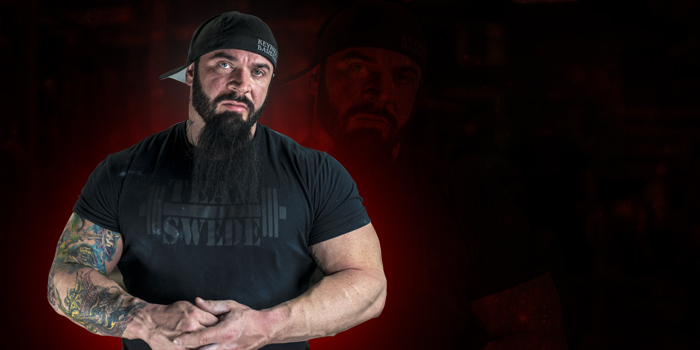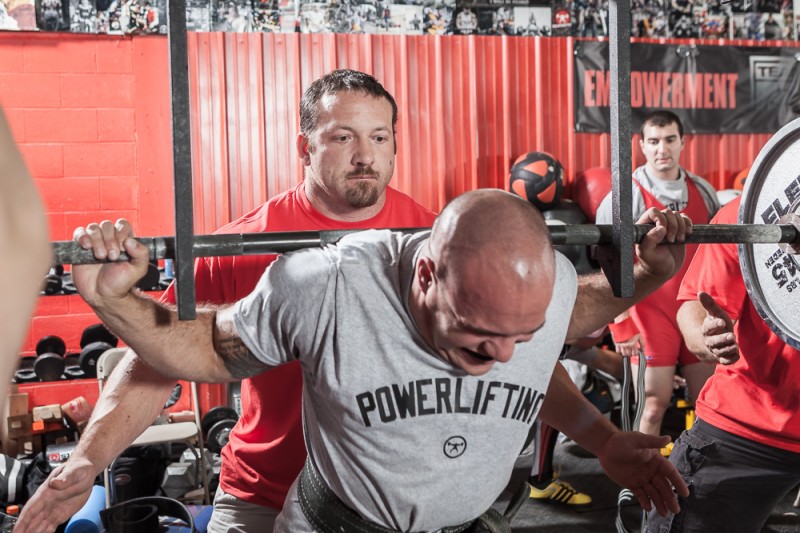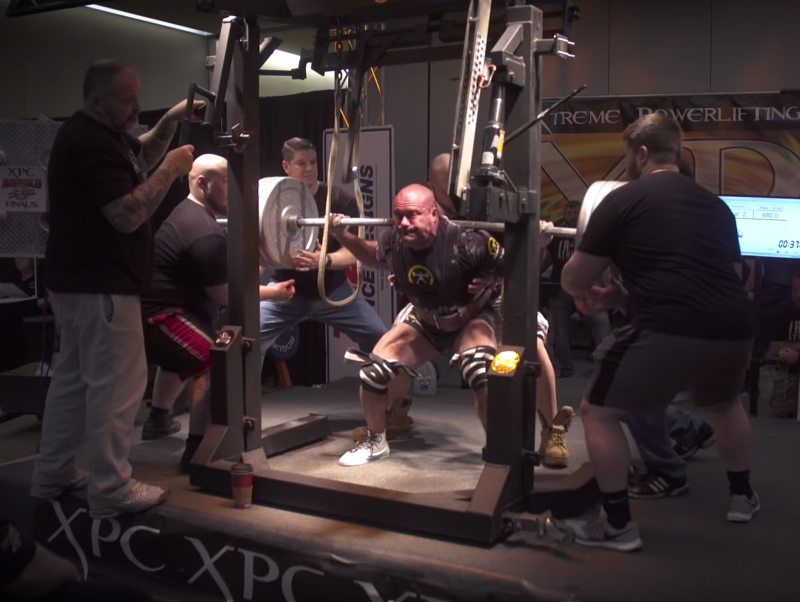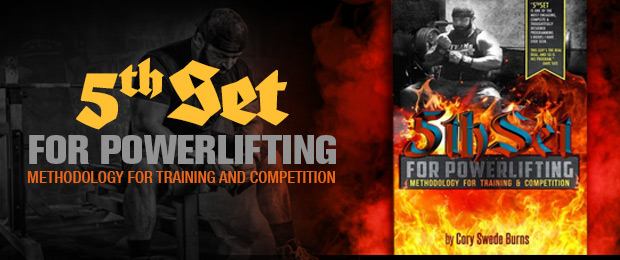
If you’ve been at this awhile, you already know what I’m about to say. If not, allow me to provide you with some perspective. To those of you who have chosen to embrace the sport of powerlifting as competitors: you will have good meets and you will have bad meets.
That sounds like some common sense, right? It’s not a very complex proposition. I think we all know about good days and bad days. What I feel is understated within the sport, however, is the amount of sway the competitor actually holds on the kind of meet they have. When someone tells me everything was glued to the floor and they didn’t have the meet they wanted, my first question is always why they think that was.
“Just a bad day.”
As though bad days are simply dropped upon us at the whim of the gods. Fair enough, but if you don’t know why things went the way they did, they’ll probably go that way again, and sooner than later. I know all about bad meets, trust me. I see lifters having them all the time, and I’ve had a few myself.
RECENT: Returning From Injury After a Layoff
The panicked desperate weakness that lies in wait just a few inches from lockout; our own hard-earned muscle betraying us, denying us. The disbelief on our faces. The disgust. You might never see a lifter walk off the platform and look another human in the eye after missing a legitimate attempt. I think maybe I’ve seen it once.
It’s like we are all too ashamed or angry to interact with anything other than canned responses. Eyes are decidedly earthbound. We are probably not even capable of complex thought at that point and all communication is on autopilot. Those who would console us can’t reach us. The silver screens in our brains are all running the same film on repeat: a highlight reel of the lift we’ve just missed. If that was our last attempt, we could end up with an all-night marathon of that feature. Very entertaining.
We are mostly similar, really, powerlifters. It’s funny how many of us hate each other’s guts. But I digress.

Now, let’s get back to the part where I said the competitor holds more sway than we would probably expect. This is absolutely a fact. So, how does a competitor begin to tilt the scales in the direction of a good meet over a bad one? The first answer is accountability. Taking complete and utter ownership of our own performances. That is huge. The single biggest thing you can do to improve your squat is to be accountable for it, and the same goes for the other lifts and total. You have to compete in order to be accountable as a competitor.
But this is not an article about accountability. We’ve already done that one.
This is about the importance of understanding how different, but also important, training and competition are in their own respects. It is crucial to delineate these two as separate but mutually impactful things. If we looked at the vast majority of lifters who experienced the “bad meet” scenario, I’d be willing to wager they were doing a whole bunch of competition in training, leading up to the actual competition. In fact, they probably did better competing in training than they did on the platform. All so they could gaze winningly at the camera for Instagram, no need to even check for white lights. Let me help you out with a long form explanation of why this is a problem. Recognizing it as a problem is going to be part of the solution, too.
Training is where we do work; competition is where we get paid. Sometimes we don’t get paid what we feel we are worth, but we usually get paid what we’ve earned.
LISTEN: Is An Exercise Science Degree Worth It?
Sadly, as competitors, we never really get compensated in training. We get training PRs, sure. But they spend like McDonald’s coupons, and no one really cares about them except for us. We can post them on the internet and get loads of likes, but those same likers are going to love watching us miss those same lifts directly in the coming meet.
Hopefully, we are developing in a number of ways throughout the course of the training year. Platform PRs sometimes take a lot more than just strength training. Part of that is mental and emotional conditioning. For 5thSet lifters, only about 20 of every 100 sessions will involve going over 90 percent of their training max. The other 80 sessions will be about performing some type of volume-based program geared toward improving multiple characteristics that support maximal strength increases down the road.
Ideally, lifters will learn this lesson as beginners, but some late bloomers have used the 5thSet macrocycle model to learn to train effectively (without blasting gear), even later in life. I can tell you first-hand that it is a very liberating feeling, like learning to walk without a crutch.

So let’s start by looking at how training should be set up.
These are my current positions, my opinions. I’ve written extensively in books and previous articles about how I arrived at these conclusions and why, but there is not enough room to explain all of those here. Instead, let’s just define the two things and why they are important.
Training
The overarching goal in training is to develop the lifter completely. To develop their strength; their technique (movement efficiency, stability and consistency in execution); their psychology (self-regulation of peak arousal, self-confidence and self-control, and positivity and focus toward challenges): all of it. All of these capacities are developed in training, though many are best expressed in competition.
This is accomplished throughout the year by putting greater or lesser emphasis on developing the various characteristics needed to consistently execute in competition. I think the secondary emphasis in training should probably be rotated based on some premeditated logical sequence, where each mesocycle puts special focus on a characteristic which will benefit the subsequent mesocycle’s objective.
For example, if I was writing a 5thSet program, the secondary training emphasis might be on hypertrophy for the first two mesocycles and then shift to a more pure strength stimulus for the next one. This would probably be followed by a peaking mesocycle, which would ideally start around 44 days out from competition.
In the peaking cycle, the stimulus would be very specific to the demands of the coming meet. The main work would be mostly singles in the 90 to 100 percent range to just beyond the first half of the cycle. Then, in the second half, the goal would shift to reducing fatigue as quickly as possible while preserving the capacities and characteristics developed throughout the training year. This reduction will hopefully allow the lifter to accurately demonstrate their strength without any inhibition caused by excess central fatigue, while at the same time mitigating the risk of injury in competition.
RELATED: Your First Meet Cycle — How to Lay the Program's Foundation
Regardless of how training looks prior to that peaking cycle, if the lifter continues to try for PRs too far into the second half of that peaking cycle, chances are they won’t have enough time to be fully recovered or free of central fatigue in time for their meet. This usually leads to performances on the platform that are less than they were in training and at an increased risk of injury. Not a good deal.
Training allows us to analyze and make corrections or improvements, which are not possible in competition. Thinking while performing a max in competition doesn’t usually work out very well. The movement should be thoughtless by then, after all of the training we've done. This is part of why internal cues can have a negative impact on performance in competition. The thinking slows us down.
In fact, I’ve had a hard time getting anyone to effectively implement corrective technique cues with more than 83 to 85 percent of 1RM in any scenario. This means integrating technical cues is probably going to be extremely difficult, if not impossible, while lifting over 90 percent. However, strength can easily be developed in the 70 to 85 percent range. So while training in that higher range may be necessary as we approach competition, we can see how doing so the rest of the year could become counterproductive. This seems especially true when we consider that technique tends to decay over time when it is not monitored and reinforced, especially as more fatigue is accumulated.
So what about competition?
Competition
From what I can see, the trending overarching goal in competition seems to be to fail on the platform with the heaviest weights possible and to do this as often as possible for as long as possible. (Hint: it’s not very long.)
At different periods in time and even in certain special cases today, lifters have concerned themselves with actually winning a meet against other competitors. I know this sounds impossible with 150 different divisions and weight classes in each meet, but the big ones do actually force you to “compete” against other qualified lifters.
I’m persuaded that the overarching goal in competition should be to build a progressive and robust competitive history that spans a long enough period to develop completely. If we are not allowed enough time and experience to develop completely, if we destroy ourselves first in the process, it doesn’t matter how quickly we improved for a time: we will never reach the heights of strength we would have if we had been smarter about things.
Competition itself is a very important aspect of that. It forces us to structure and prioritize our training because we know we will have to deal with our own performances. That’s not the same thing as being accountable, but it’s a step in the right direction. At least, it sets us up for a learning experience albeit with no guarantee we will actually learn anything, as we’ve already covered. Many of us are all too familiar with these fruitless “learning experiences” to even deny that. But we can choose to be humble, to be teachable. If we do that, we can learn a lot from competition; potentially, how to avoid more long nights with visions of failed attempts dancing in our heads.
READ MORE: How I Trained for a 600-Pound Bench
Competition should allow us an arguably safe environment to hit the heaviest numbers we’ve ever lifted. A well-run competition provides competent spotters, some potentially life-saving safety devices, and top-notch equipment, including bars and even calibrated plates.
This may seem like the ultimate opportunity to see what we are capable of, maybe hit some lifetime PRs, and cash in on all the intelligent work we’ve been doing in training. It can and will be that if we learn to identify it as such. It will almost certainly not be that if we treat every session in training as though it were the same opportunity.










